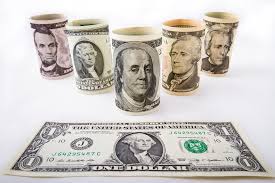Dollar near 2018 lows as traders eye more US stimulus; sterling sheds 1%

The U.S. dollar index remained near Friday’s two-and-a-half-year low on Monday as weak U.S. jobs data last week heightened expectations of economic aid, while sterling sank as Britain and the European Union made a last-ditch attempt to strike a trade deal.
Fears rose of a chaotic no-trade deal Brexit on Dec. 31 when the United Kingdom finally leaves the EU’s orbit.
In the United States, Friday’s jobs data showed non-farm payrolls increased by 245,000 last month, the smallest gain since May, a sign the jobs recovery slowing during the third wave of coronavirus infections.
“The recent loss of momentum is a concern as it suggests that it will take longer to reverse the negative hit to the U.S. labour market from the COVID shock, given renewed disruption from the third wave,” said Lee Hardman, currency analyst at MUFG, adding that this “will increase pressure on both Congress and the Fed to deliver further stimulus.”
Talks aimed at delivering fresh coronavirus relief to gathered momentum in the U.S. Congress on Friday, as a bipartisan group of lawmakers worked to put the finishing touches on a $908 billion bill.
A final version of the proposed legislation is expected earlier this week. At the same time, the Federal Reserve is expected to make more adjustments to its quantitative easing later this month.
“In the current trading environment, the increasing speculation over looser U.S. fiscal and monetary policies provides support for risk assets and weighs on the U.S. dollar,” Hardman said.
An index which tracks the dollar against a basket of currencies was last trading up 0.1% at 90.96, close to 90.47, its weakest since April 2018.
Over the past week, the U.S. dollar sell-off has extended further with weakness most evident against the Swiss franc, euro and Canadian dollar.
The euro fell 0.1% to 1.2107, but remained close to $1.2177, its highest since April 2018.
The British pound was down 1% at $1.3287 and also by 1% against the euro at 91.07 pence.
Elsewhere, the Norwegian crown fell 0.8% at 8.8590 against the dollar, while shedding 0.5% versus the euro at 10.7255, having touched earlier a two-and-a-half-week low of 10.7340.
The Australian dollar fell 0.2% at 0.7407 versus the U.S. dollar.

